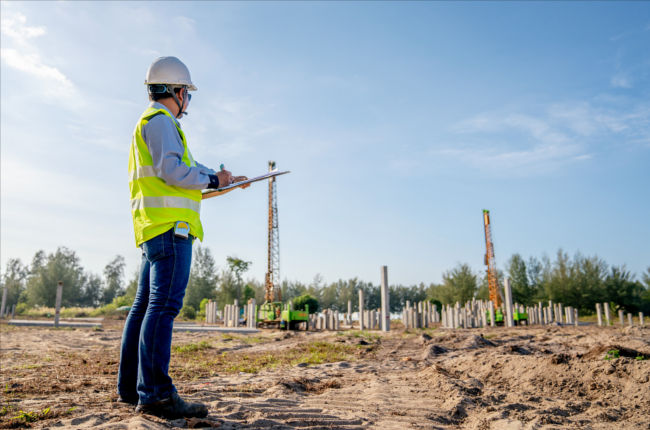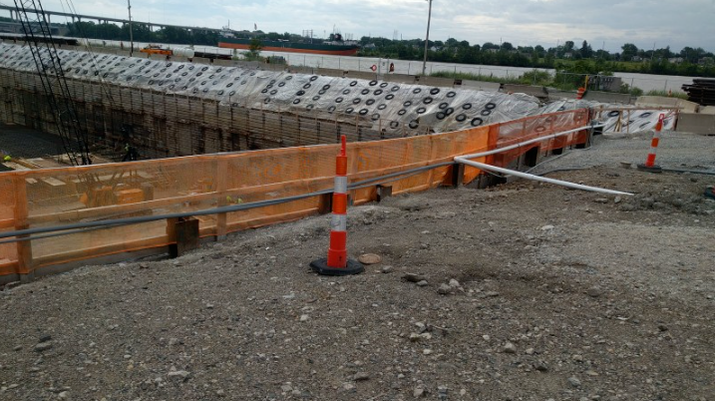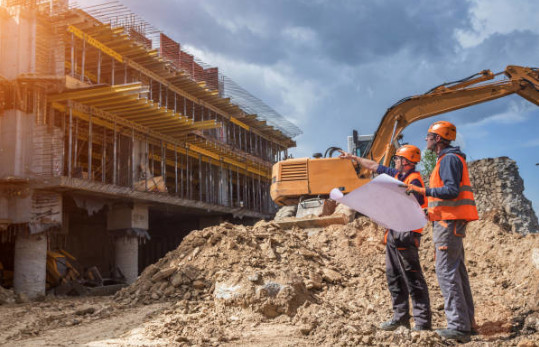Geotechnical Geologist Services for Accurate Soil and Rock Evaluation
Geotechnical Geologist Services for Accurate Soil and Rock Evaluation
Blog Article
A Detailed Evaluation of the Providers Given by Consulting Engineers in the Field of Geotechnical Design: From Site Examination to Job Implementation
Consulting engineers in geotechnical design play an essential role in the successful execution of building jobs, starting with detailed website examinations that disclose critical subsurface conditions. Their competence prolongs to dirt residential or commercial property evaluations, environmental effect examinations, and the cautious tracking of job application, making certain placement with safety and security and sustainability criteria.
Relevance of Geotechnical Design
Geotechnical design is a critical discipline that underpins the safety and sustainability of civil facilities jobs. By comprehending the mechanical habits of soil and rock materials, geotechnical designers analyze the viability of sites for various buildings, including structures, bridges, and dams. This essential analysis guarantees that frameworks can stand up to ecological variables and lots without experiencing failing.
The relevance of geotechnical design expands past simple architectural safety and security; it also incorporates ecological stewardship. Correct geotechnical evaluations add to reducing the ecological influence of building and construction. Through cautious analysis of soil properties and groundwater problems, designers can make structures and preserving structures that reduce risks such as disintegration and landslides, promoting long-term security.
Additionally, geotechnical engineering plays a vital function in project expense management. geotechnical works. By determining possible problems early in the layout phase, designers can recommend proper solutions, therefore staying clear of expensive hold-ups and redesigns during building. This aggressive method not just enhances job performance but likewise significantly minimizes threats connected with unanticipated site conditions
Website Examination Techniques
Efficient website examination techniques are vital for collecting accurate information concerning subsurface conditions prior to building. These methods facilitate the understanding of the geological and hydrological environment, which is vital for making certain the stability and safety of suggested structures.
Typical approaches used in website examinations consist of borehole drilling, which allows engineers to extract soil samples at various depths, offering insights into stratification and material types. Furthermore, geophysical studies, such as seismic refraction and electric resistivity, deal non-invasive means to assess subsurface qualities over bigger areas. These techniques can aid recognize abnormalities without extensive excavation.
Test pits are another useful strategy, giving direct observation of soil layers and enabling in-situ testing. geotechnical works. This approach is particularly helpful for shallow excavations and can assist examine groundwater degrees. Cone penetration tests (CPT) are increasingly used, as they provide continual profiles of soil resistance, which aids in identifying soil strength and layering.
Each of these strategies plays an essential role in developing a thorough understanding of site problems, allowing consulting engineers to make informed decisions and referrals throughout the task lifecycle. Exact information collection throughout the website investigation phase is pivotal to mitigating risks and ensuring effective task execution.
Dirt Building Assessment

The assessment process normally entails a mix of laboratory tests and field investigations. Trick homes such as shear stamina, compressibility, leaks in the structure, and dampness web content are evaluated to determine the soil's suitability for building functions. Typical examinations, consisting of the Atterberg restrictions, Proctor compaction, and triaxial shear examinations, are generally used to gather information on dirt actions.
Along with these examinations, in-situ approaches such as the Criterion Infiltration Examination (SPT) and Cone Infiltration Examination (CPT) use useful understandings into soil stratigraphy and density. The results of these analyses educate designers regarding prospective difficulties, such as soil liquefaction or settlement, enabling them to develop proper mitigation techniques.
Environmental Impact Analysis
Ecological impact analysis plays an essential duty in the planning and implementation of design find out here now jobs, particularly in geotechnical engineering. This process includes analyzing the prospective environmental consequences of suggested jobs on soil, water, air top quality, and surrounding environments. Consulting engineers make use of different methodologies, consisting of site assessments, modeling, and area studies, to recognize and measure these impacts.
The analysis usually begins with the recognition of baseline ecological conditions, which functions as a reference for forecasting prospective changes. Designers analyze aspects such as erosion, groundwater contamination, and environment disruption, making certain that all appropriate ecological laws and standards are followed throughout the project lifecycle. Stakeholder engagement is additionally an integral component of the assessment process, as it cultivates interaction between job developers, regional communities, and governing bodies.
Moreover, mitigation approaches are established to address determined influences, allowing engineers to suggest choices or modifications to forecast layouts that enhance sustainability. This positive technique not just minimizes unfavorable results on the setting but also promotes public depend on and conformity with ecological legislation. Eventually, efficient ecological influence evaluation strengthens the general stability and stability of geotechnical engineering helpful resources projects, supporting accountable advancement techniques.
Task Execution and Monitoring

Monitoring is a necessary component of project execution. Engineers make use of various techniques, such as instrumentation and field tests, to examine soil habits and structural feedbacks in real-time. This constant monitoring allows the recognition of any type of inconsistencies from expected efficiency, allowing for timely treatments to reduce threats.
Furthermore, getting in touch with engineers preserve open interaction with professionals and stakeholders throughout the procedure. Normal site assessments and progress reports make sure that all parties are informed regarding task status and any type of arising problems. By fostering collaboration and openness, getting in touch with engineers help with a much more effective execution procedure, thereby improving job end results.
Inevitably, effective job execution and surveillance not only support security and top quality criteria yet also add to the general success of geotechnical jobs, guaranteeing they meet their investigate this site intended purposes sustainably and properly.

Final Thought
In final thought, the role of getting in touch with designers in geotechnical design includes a crucial series of services that make certain project success. Inevitably, the multifaceted payments of speaking with designers are important in addressing the complexities of geotechnical obstacles in modern design projects.
Report this page